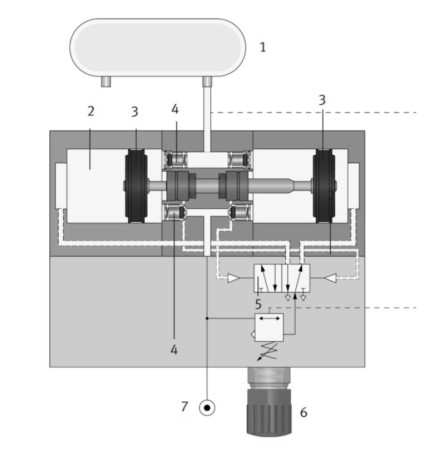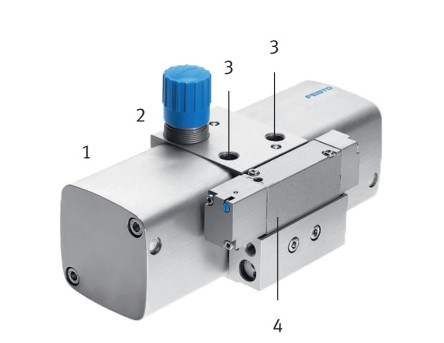Understanding Air booster
Air pressure boosters are used to amplify pressure in pneumatic applications. On the one hand, use of pressure boosters is interesting when pressure needs to be increased within a system in a selective fashion. In this case, the entire system, or portions of it, do not have to be supplied with excessively high pressure, which would result in significantly higher operating costs.
However, it’s important to know that pressure boosters cannot be used as a replacement for compressors! In the event of continuous operation, it must be assumed that the drive pistons will wear out after roughly 1000 to 2000 hours, which should thus be replaced as a precautionary measure.
On the other hand, pressure boosters can also be used with portable equipment, that is to say mobile pneumatics. In this case, minimal pressure can be generated with very small compressors, and then amplified with the help of a booster.
Beyond the already available compressed air, the pressure booster does not require any external energy, but it consumes a great deal of compressed air and thus demonstrates a poor energy balance.
Pressure boosters are represented with the symbol on the right in pneumatic circuits diagrams.

- Detail of a pressure booster
- 1 Working reservoir
- 2 External chamber
- 3 Twin pistons
- 4 Non-return valves
- 5 Reversing valve
- 6 Pressure regulator
- 7 Compressed air supply
Pressure boosters are twin-piston pressure intensifiers and are only capable of compressing air. The basic variant of the booster simply consists of a twin-piston system and a reversing valve which assures continuous operation. Input pressure is doubled with the basic setup – it’s not possible to select a lower boosting level.
Pressure boosting can be reduced to a value of less then twice the input pressure with the help of air pressure boosters which are additionally equipped with a pressure regulator.
In this case, pressure in the external chambers is reduced by the pressure regulator. The pressure regulator is decisive with regard to the amount of boosting which is actually achieved. However, due to the utilised operating principle, pressure cannot be boosted to a value of greater than twice the input pressure.

- Pressure booster with pressure regulator
- 1 Housing with twin-piston system
- 2 Pressure regulator for reduced pressure boosting
- 3 Operating and working pressure ports (p1 and p2)
- 4 Reversing valve for a continuous working process
Pressure booster DPA
The pressure booster DPA is a twin-piston pressure intensifier used to compress air. When the compressed air booster DPA is pressurised with compressed air, secondary pressure is automatically built up. The output pressure p2 can increase to up to twice the value of the input pressure p1. The required output pressure is set using a manually operated pressure regulator. In the case of Festo pressure boosters without a pressure regulator, the output pressure is always double the input pressure. A special feature of the Festo compressed air booster DPA is the sensing option: when equipped with an external sensor and an adding counter, the DPA can detect the strokes of the drive piston, thus enabling the service life to be monitored. Pressure boosters are designed in principle to increase the pressure at low air consumption.